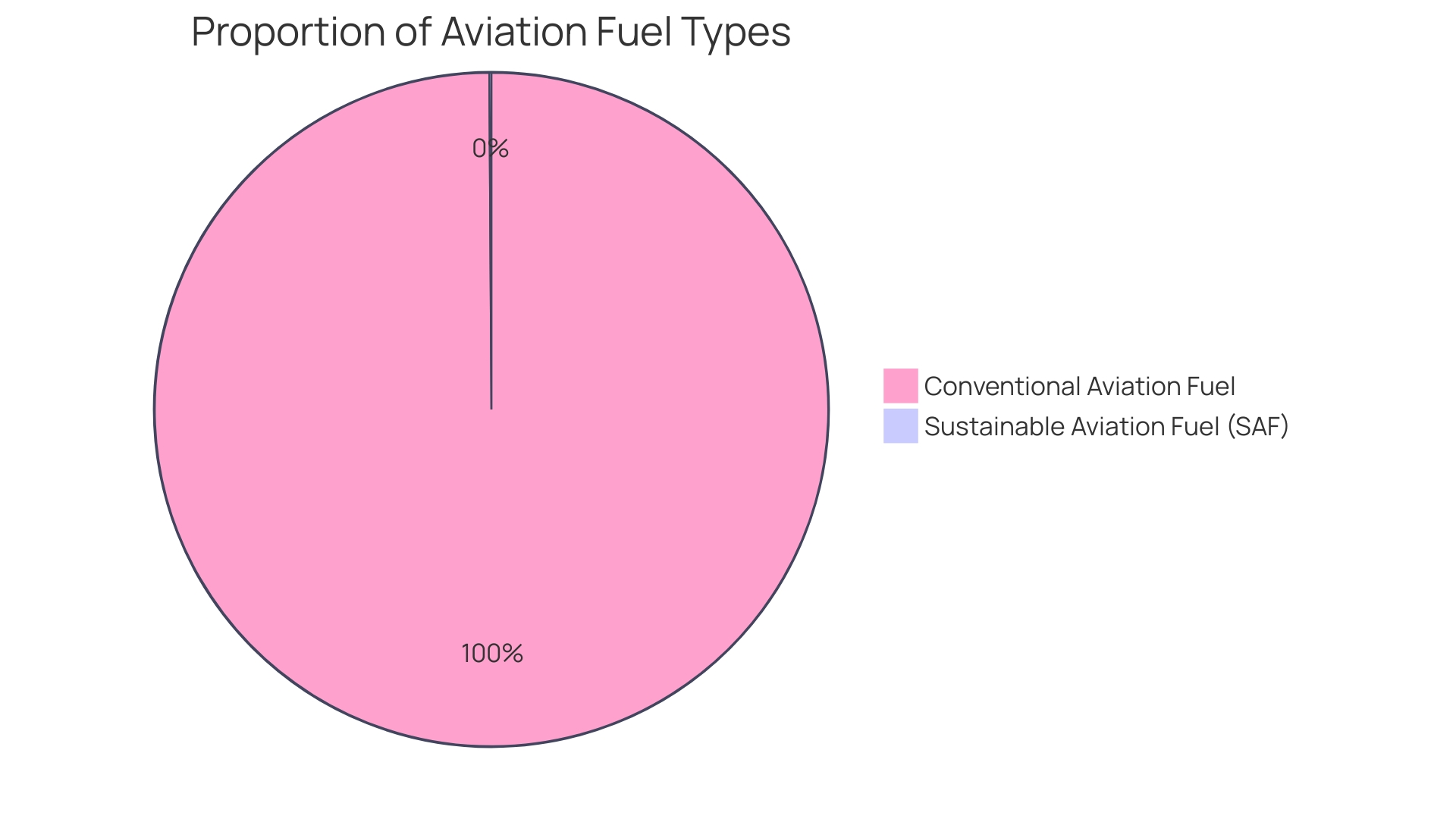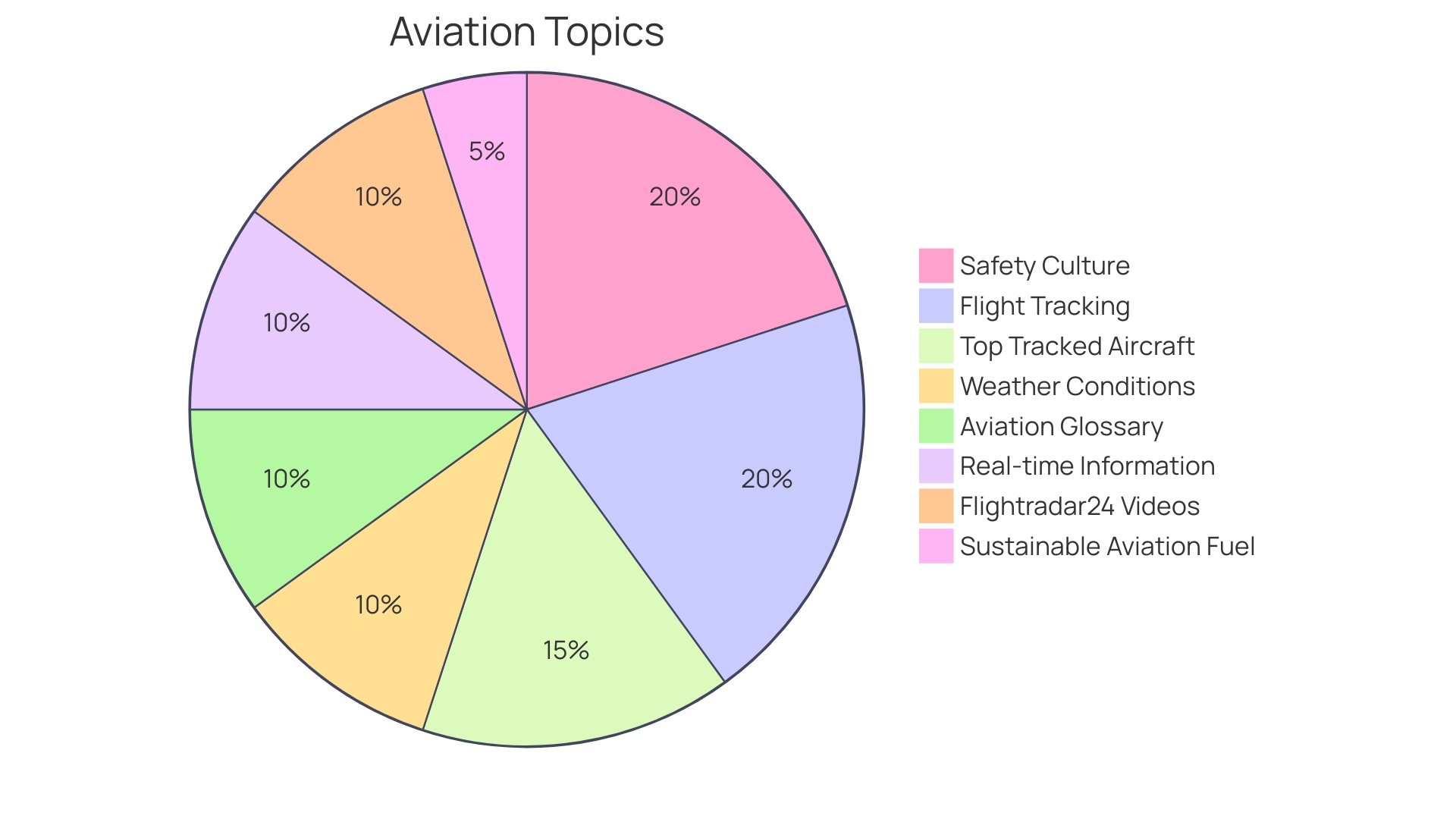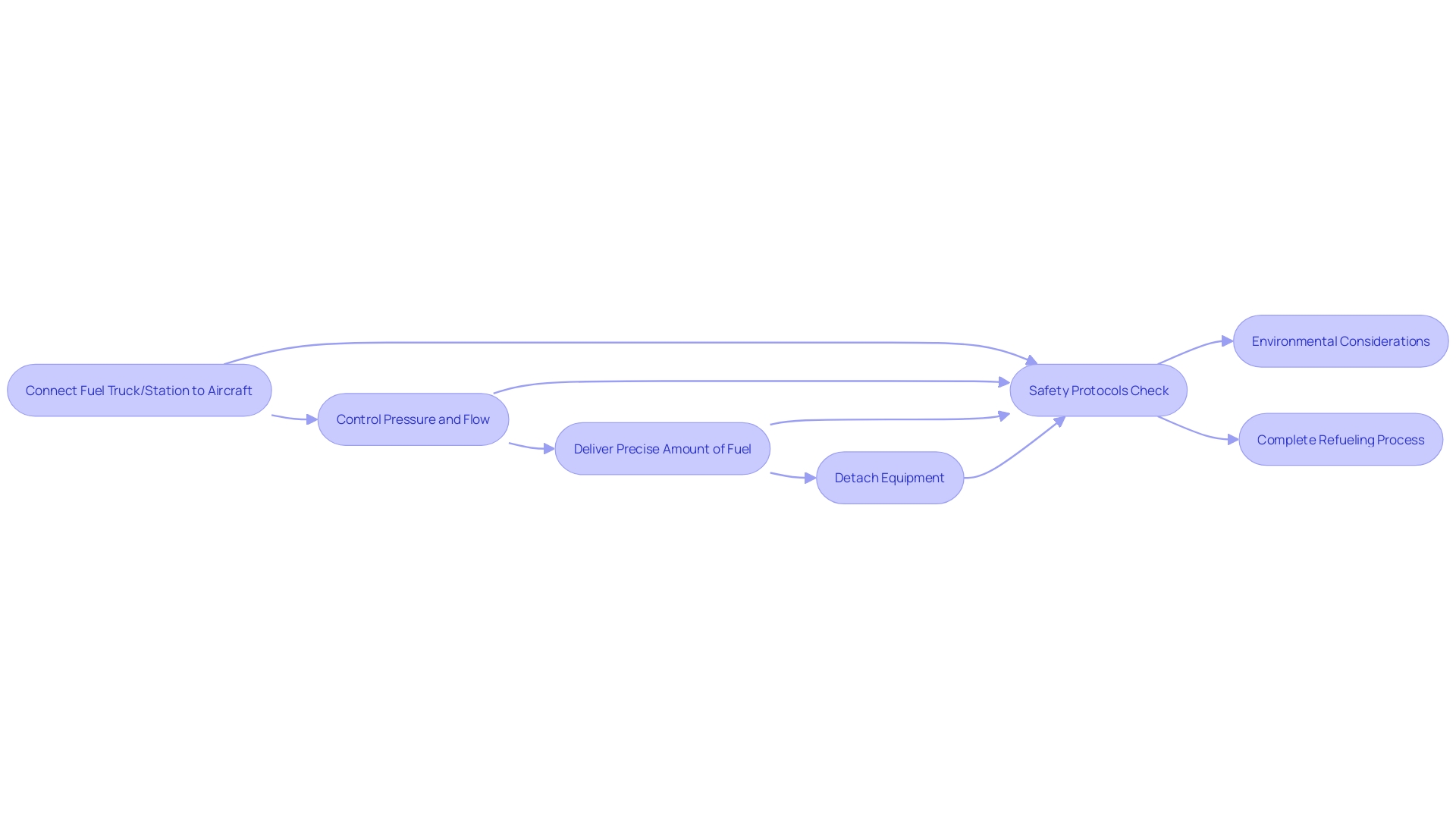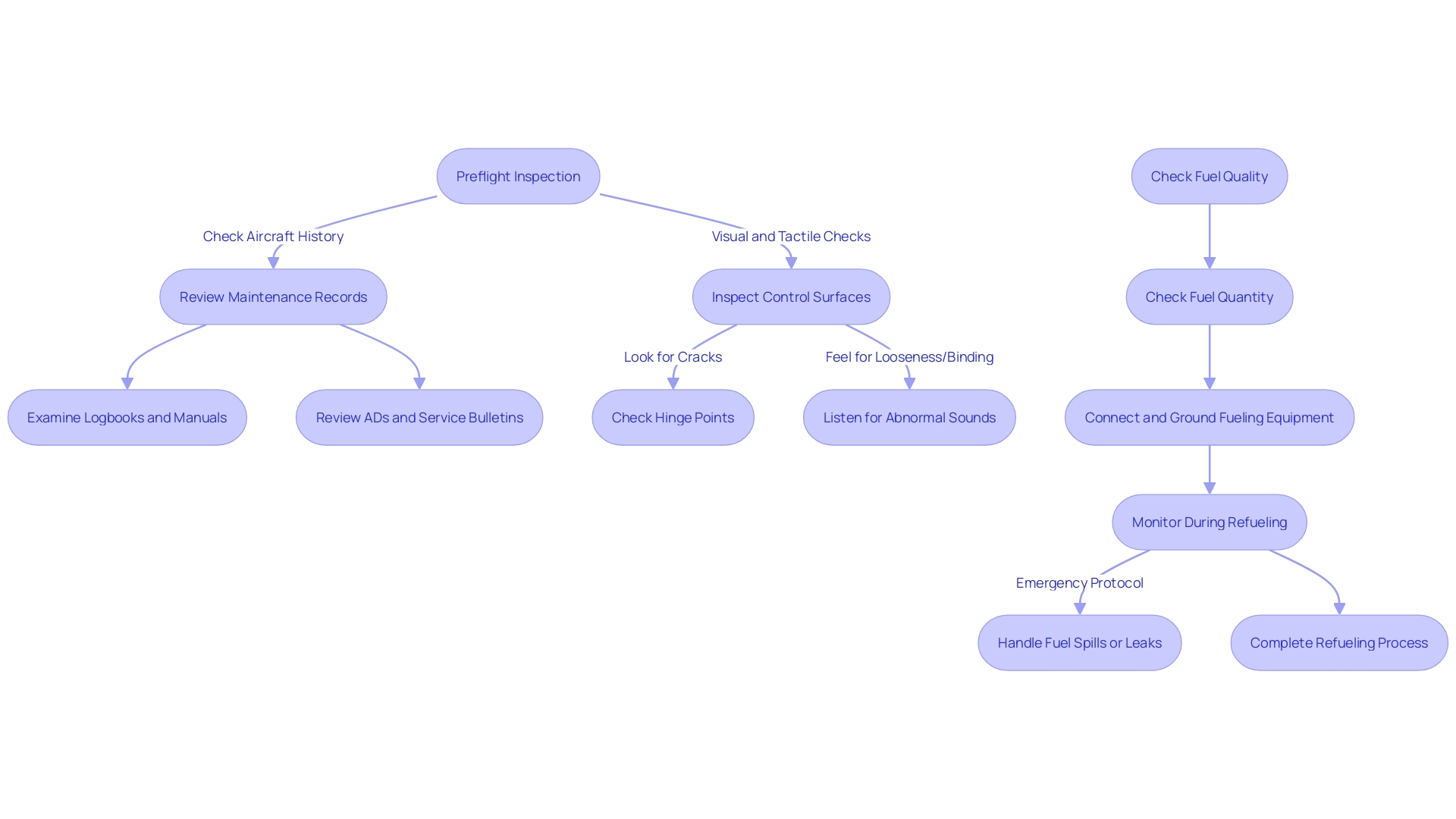Introduction
Aviation fuel has played a crucial role in the growth and safety of air travel since the early days of flight. From the use of gasoline in early aircraft engines to the development of specialized fuels like Avgas and jet fuel, the industry has continuously evolved to meet the demands of aviation technology.
Today, the renewable fuels industry is making strides towards a greener future for aviation. The use of sustainable aviation fuels (SAF) has gained significant interest due to its potential to reduce the environmental impact of the aviation sector. With the US aviation sector being the third-largest source of transportation emissions, the urgency for sustainable solutions is increasing.
One notable development in this field is LanzaJet's Freedom Pines Fuels plant in Georgia, which became the world's first facility to convert ethanol into SAF. This innovation addresses the industry's need for a renewable fuel that is safe, reliable, and compatible with existing jet engines.
Although the adoption of SAF is still in its early stages, with only 0.1% of flights currently powered by it, there is a commitment to expanding its production and use. Both the public and private sectors are investing in scaling up the production of this energy-dense, renewable fuel.
As the aviation industry embraces changes in fuel chemistry, it remains firmly anchored in a safety culture. Continuous enhancements in flight tracking and coverage ensure that aviation maintains its status as one of the safest modes of transport.
With a deep understanding of the renewable fuels industry, this article provides technical insights and analysis for readers interested in the advancements and challenges of sustainable aviation fuels.
History and Development of Aviation Fuels
Aviation fuel has been integral to the growth and safety of air travel since the Wright brothers' first successful flight. Initially, early aircraft engines employed gasoline similar to that used in cars. But with advancements in aviation technology, the demand for specialized fuels brought forth Avgas and jet fuel, which remain the mainstays of today's aviation fuel types.
The propulsion of aviation into a greener future is exemplified by the historic transatlantic flight by a Virgin Atlantic passenger plane using only alternative fuels, marking a significant step towards net-zero carbon emissions. Although this was a pioneering event, it highlighted the ongoing challenges, such as the limited supply of sustainable aviation fuels (SAF).
SAF has garnered increasing interest due to its potential to reduce aviation's environmental footprint. The US aviation sector, as the third-largest source of transportation emissions, is expected to grow, thus amplifying the urgency for sustainable solutions. SAF presents a viable option, particularly since commercial aircraft have lifespans of 20 to 30 years, and electric-powered airplanes may not be suitable for long-haul flights.
LanzaJet's Freedom Pines Fuels plant in Georgia represents a monumental stride in the quest for decarbonized aviation, being the world's first facility to convert ethanol into SAF. This innovation caters to the industry's need for a fuel that is safe, reliable, and compatible with existing jet engines, all while being renewable.
The adoption of SAF is still in its nascent stages, with only 0.1% of flights currently powered by it. However, the commitment to expanding its production and use is unwavering, as both public and private sectors invest to scale up this energy-dense, renewable fuel. As the industry continues to invite changes to its fuel chemistry, it remains anchored in a safety culture, continually enhancing flight tracking and coverage to maintain its status as one of the safest modes of transport.

Types of Aviation Fuels: Avgas and Jet Fuel
Aviation gasoline (Avgas) and jet fuel are the two primary types of fuels powering the diverse range of aircraft in the skies today. Avgas, with its high octane ratings, is pivotal for the smooth operation of piston-engine aircraft. Although it has a lower energy density, it is tailored to the unique demands of these engines.
In contrast, jet fuel, a kerosene-based concoction, caters to the robust needs of turbine engines found in jet aircraft, providing a higher energy density essential for their performance.
Amidst growing environmental concerns, the aviation industry is witnessing a significant shift with sustainable aviation fuels (SAF) emerging as a cleaner alternative to traditional fossil fuels. SAF, derived from sources such as fats, sugars, and even municipal waste, represents a groundbreaking advancement in the quest for reduced carbon emissions. This shift is underscored by a monumental flight across the Atlantic, powered by these novel fuels, signaling a step towards the industry's ambitious goal of achieving net-zero carbon emissions by 2050.
However, SAF production currently falls short of the industry's needs, with the United States producing sustainable fuel sufficient for less than 0.2% of the industry's jet fuel consumption. The challenge ahead is substantial, as the demand for SAF is expected to grow, driven by both its environmental benefits and the necessity to meet regulatory emissions targets.
The adoption of SAF is not merely an environmental imperative but also a technical one, ensuring that these new fuels are as reliable and safe as traditional Avgas and jet fuel, while being fully compatible with existing aircraft engines. The industry's commitment to safety and the seamless integration of SAF into existing infrastructure are paramount to the successful transition towards a more sustainable future in aviation.

Key Properties and Performance of Aviation Fuels
Understanding the essential properties of aviation fuels is crucial for the safety and efficiency of aircraft operations. Commercial aviation's commitment to safety extends to the meticulous regulation of fuel characteristics such as energy density, volatility, flash point, and freezing point. Energy density is particularly important because it determines the amount of energy obtainable from a specific volume of fuel, directly impacting the aircraft's range and efficiency.
Volatility is another critical property, influencing how readily fuel vaporizes to facilitate efficient combustion. Meanwhile, the flash point is a safety measure, indicating the lowest temperature at which fuel can vaporize to form an ignitable mixture with air. The freezing point is equally vital, especially for flights traversing extremely cold environments, as it marks the temperature below which fuel loses its fluidity, potentially affecting flow to the engine.
The robustness of these fuel properties becomes even more significant with the advent of Sustainable Aviation Fuel (SAF). As the aviation industry welcomes technological advancements, such as the pioneering ethanol-to-SAF production process by LanzaJet, ensuring the compatibility of these new fuels with existing jet engines is paramount. Investments in SAF are propelled by the goal of net zero carbon emissions, with Virgin Atlantic exemplifying this commitment through its global network and customer-centric approach.
The emergence of SAF represents a transformative step in aviation, combining the industry's safety ethos with environmental stewardship. As we witness the deployment of new technologies and the expansion of coverage by flight tracking services, SAF stands out for its potential to maintain the high safety standards of commercial aviation while also addressing the pressing need for sustainable practices.
The Importance of Fuel in Aircraft Operations
Aviation fuel is the powerhouse behind every flight, indispensable for both propulsion and the operation of critical aircraft systems. It provides the vital energy needed to power engines and generate the thrust crucial for takeoff, cruising, and landing. Beyond its primary role in engine function, aviation fuel also serves as a coolant, safeguarding engines against overheating during critical operations.
Moreover, aviation fuel is integral to the proper functioning of aircraft systems including hydraulics, electrics, and deicing equipment—ensuring both safety and performance in various flight conditions. For instance, the weather can significantly impact aviation operations, with strong winds and poor visibility inducing delays and requiring diversions, as noted in cases where flight control must prepare for emergency landings.
Innovation in fuel technology is a constant pursuit, as exemplified by Virgin Atlantic's recent milestones in sustainable aviation fuels (SAF). Such advancements are crucial for the industry's push towards net zero carbon emissions. Supported by partnerships and joint ventures with other global carriers, Virgin Atlantic has demonstrated the feasibility and commitment to a cleaner aviation future.
This commitment is mirrored by the groundbreaking work of companies like LanzaJet, which inaugurated the world's first ethanol-to-SAF production plant. This pivotal development marks a significant stride in the quest for decarbonized aviation, indicating a transformative phase for the industry. With the aviation sector actively welcoming these changes, the integration of SAF stands as a testament to the industry's dedication to sustainability while maintaining the stringent safety standards and infrastructure it is known for.
How Aircraft Refueling Works
Refueling aircraft is a complex and meticulous task that necessitates precise coordination and a keen focus on safety. The procedure is initiated when a fuel truck or refueling station connects its hoses to the aircraft's designated fuel ports. As fuel is pumped into the tanks, strict control of pressure and flow is maintained to ensure accuracy and safety.
This critical operation is governed by stringent safety protocols to mitigate the risk of spills or leaks, safeguarding both personnel and the environment. Upon delivering the precise amount of fuel, the equipment is detached, signaling the end of the refueling sequence.
The importance of such procedures is not just a matter of routine but a pivotal component in the larger context of aviation safety and environmental responsibility. It's akin to the insights gained from the Waubonsee Community College students who, through a case study on Sustainable Aviation Fuels (SAFs), understood the life-cycle impact of aviation fuels. Similarly, the pioneering work by Air Liquide, Airbus, and Group ADP in testing hydrogen fuel systems reflects the industry's commitment to exploring sustainable fuel options.
These initiatives underscore the critical nature of fueling operations, not only in terms of technical execution but also in their potential environmental and economic impacts.
Safety in aviation is not taken lightly; it is a result of the collective efforts of experts like those at Boeing who collaborate with governments and industry organizations to enhance safety across all aspects of the global air transportation system. This collaborative spirit is embodied by groups such as the Commercial Aviation Safety Team (CAST), underscoring the industry's proactive stance on accident prevention and thorough investigation of any incidents that do occur. The adherence to safety, quality, and compliance in aviation is a testament to the industry's unyielding commitment to the principles of safeguarding human lives and preserving the integrity of our environment.

Safety Measures in Aircraft Refueling
Ensuring the utmost safety in aircraft refueling is a complex endeavor that involves meticulous adherence to established safety protocols and continuous learning from industry experts. The aviation industry has demonstrated a remarkable commitment to safety, as evidenced by the collaborative efforts of the Commercial Aviation Safety Team (CAST), which includes airlines, manufacturers, labor, and government representatives. This team's collective goal is to prevent accidents and understand the root causes of any incidents to prevent recurrence.
In line with these efforts, Boeing human factors experts analyze human abilities and limitations to optimize tools, machines, systems, and processes, all with an eye on enhancing safety. Their work emphasizes the importance of understanding and applying data related to airplane accidents, ensuring that each stakeholder in the aviation ecosystem is well-informed and vigilant.
The safety culture in aviation extends to the ground, where fueling operations are critical. Grounding the aircraft to dissipate static electricity, using advanced grounding and bonding techniques during fuel transfer, and thorough inspections and maintenance of the fueling equipment are not just procedures but are integral to the industry's safety-first philosophy. Air Liquide's experience with cryogenic hydrogen for the European Space Agency's Ariane rockets and their investigations into hydrogen's potential in aviation demonstrate the technological advancements and rigorous safety considerations that go into fueling operations.
Furthermore, specialized training for fueling personnel is a non-negotiable aspect of the aviation industry. The comprehensive training ensures that they are well-versed in safety practices and emergency response, contributing to the remarkable safety record highlighted by the International Air Transport Association (IATA). The IATA's 2023 Annual Safety Report shows unprecedented safety achievements, with no hull losses or fatal accidents involving passenger jet aircraft and an all accident rate of 0.80 per million sectors—a testament to the industry's unwavering commitment to safety.
Moreover, this focus on safety is not just limited to the skies. The ground-breaking creation of the LanzaJet Freedom Pines Fuels plant showcases a dedication to sustainable and safe fueling options. As the world’s first ethanol-to-sustainable aviation fuel (SAF) production plant, it represents a significant stride toward decarbonizing aviation without compromising safety standards.
All of these measures, from collaboration and data analysis to training and innovative fueling technologies, form the foundation of an industry where safety is not an afterthought but the guiding principle. Each task, whether it is the routine refueling of an aircraft or the development of new fueling infrastructures, is approached with a safety-first mindset, reinforced by the industry's commitment to transparency, accountability, and the relentless pursuit of excellence in safety.
Components and Functionality of an Aircraft's Fuel System
Fuel management is pivotal in modern aviation, ensuring a consistent and safe energy supply to aircraft engines. This complex system consists of interconnected components such as fuel tanks, pumps, filters, lines, and control systems, each playing a critical role. Fuel tanks are engineered to securely accommodate the fuel onboard.
Pumps efficiently move the fuel to where it's needed, while filters are tasked with purifying the fuel by eradicating contaminants that could impair engine performance. Fuel lines serve as conduits, channeling the fuel throughout the aircraft, and sophisticated control systems oversee the delivery of fuel at the correct flow and pressure to the engines.
In the context of advanced aircraft like the Airbus A380, a marvel of modern engineering that entered service in 2007, the integration of such fuel systems is even more crucial. Although the A380, with its sheer size and advanced technology, faced market challenges leading to its production cessation in 2021, the aircraft exemplifies the industry's strive towards technological excellence. Companies like Baker Hughes and its business Druck are contributing to this advancement by providing state-of-the-art pressure measurement technology, ensuring that critical systems, including fuel management, operate with unparalleled precision and reliability.
The aviation industry's commitment to safety is further underlined by the ongoing shift towards sustainable aviation fuels (SAF). These renewable fuels are designed to be fully compatible with existing jet engines, ensuring the same level of safety and reliability as traditional fuels. The transition to SAF is a testament to the industry's proactive approach to sustainability, paving the way for a greener future in air travel while maintaining the high safety standards that commercial aviation is known for.
Refueling Procedures and Protocols
Ensuring aircraft refueling is conducted safely and efficiently requires meticulous attention to detail and adherence to a set of established protocols. Preflight inspections are crucial; these involve a thorough examination of fueling equipment, ensuring that fuel quality and quantity meet the required standards. The connection and grounding of fueling equipment are critical to prevent static discharge during the fuel transfer process.
Monitoring throughout the refueling process is also essential to ensure the transfer is proceeding correctly and to immediately address any irregularities. In the event of emergencies, such as fuel spills or leaks, protocols are in place to swiftly manage the situation, minimizing risk to personnel, passengers, and the aircraft itself. This focus on safety is exemplified by Boeing's commitment to collaborating with industry organizations and governments to enhance aviation safety continually, underscoring the importance of a proactive safety culture.
Additionally, the aviation industry's record-low fatality risk rate in 2023, as reported by IATA, reflects the success of rigorous safety measures and the critical nature of precise refueling procedures. The journey towards safer, more sustainable aviation is further highlighted by Airbus's ambition to make its aircraft 100% SAF-capable by 2030, demonstrating a proactive approach to environmental stewardship in aviation fueling practices.

Significance of Accurate Fueling and Its Impact on Flight Safety
Ensuring accuracy in fueling is not just a matter of procedure, but a critical aspect of flight safety that directly influences the stability and handling of an aircraft. The precise management of fuel quantity and its distribution is essential, as it determines the overall weight and balance of the aircraft. A miscalculation can have dire consequences, such as fuel exhaustion mid-flight, leading to loss of engine power and forcing pilots into emergency situations.
Conversely, overfueling can result in unnecessary excess weight, hindering fuel efficiency and imposing additional operational costs.
The importance of this precision was underscored by the International Air Transport Association's (IATA) 2023 Annual Safety Report, which revealed an admirable safety record with no hull losses or fatal accidents involving passenger jets. However, the industry's commitment to safety and operational efficiency is a constant endeavor, as evidenced by the single fatal turboprop accident that year, which tragically resulted in 72 fatalities. With over 37 million aircraft movements reported in 2023, representing a 17% increase from the prior year, the need for meticulous fuel management becomes even more apparent.
The aviation industry is also exploring innovative fueling solutions, such as sustainable aviation fuel (SAF), which is garnering significant public and private investment. Saf's compatibility with existing jet engines is a testament to the industry's adaptability and its endeavors to reconcile environmental concerns with safety and efficiency. The successful flight of an aircraft using liquid hydrogen by the H2Fly consortium, and the opening of the world's first ethanol-to-SAF production plant by LanzaJet, highlight the progressive strides being made in aviation fuel technology.
In the push for advancement, however, the industry must also consider the substantial cost of infrastructure changes required to support new types of fuel, with estimates reaching up to a billion dollars per airport. The Airbus A380's journey serves as a poignant example of aviation's complex interplay between technological prowess and market realities. The A380, while a marvel of modern engineering, faced challenges due to its size and market fit, leading to a premature end to its production despite being embraced by certain operators like Qantas.
Accurate fueling, therefore, is a linchpin in the aviation industry's endeavor to maintain the highest standards of safety, efficiency, and innovation. It is a critical task that demands constant vigilance, precision, and a forward-thinking approach to emerging fuel technologies and their implications for the future of air travel.
Minimum Fuel Requirements and Safety Regulations
Aviation, a field where safety is paramount, adheres to stringent fuel regulations to ensure the security of all onboard. These protocols calculate the essential fuel quantity by factoring in the designated flight path, potential alternate airports, anticipated meteorological conditions, and mandatory aviation guidelines. Pilots and airlines are obligated to comply with such rules, a commitment that reflects the industry's unwavering dedication to safety.
This culture of safety has contributed to the remarkable achievement reported by IATA, with 2023 being one of the safest years in aviation history, having no passenger jet hull losses or fatal accidents, and an all-accident rate at a record low of 0.80 per million flights.
Innovations in aviation fuel are also shaping the industry's future. A historic leap was made with the first transatlantic flight powered entirely by sustainable aviation fuel (SAF), marking a pivotal step towards aviation's goal of net-zero carbon emissions. This flight, subject to rigorous review by the Civil Aviation Authority, highlights the efficacy of SAF—a renewable and energy-dense alternative to traditional jet fuel.
Saf's full compatibility with existing jet engines is a testament to the industry's commitment to innovation without compromising reliability and safety.
The forward-thinking approach of the aviation industry is encapsulated by Virgin Atlantic's foray into SAF and its pursuit of decarbonization, with leaders like Sir Richard Branson championing the spirit of innovation. The UK Transport Secretary's remarks on the historic SAF-powered flight underscore the dual objective of decarbonizing transport while preserving the freedom of flying.
Advanced preflight practices, which encourage pilots to gain a thorough understanding of their aircraft's maintenance history and potential vulnerabilities, further bolster aviation safety. This detailed approach to inspections, as advocated by industry experts, empowers pilots to identify and address maintenance discrepancies, significantly reducing accident risks associated with overlooked maintenance issues.
As commercial aviation continues to prioritize safety, it remains one of the most secure transportation modes available to travelers. Ongoing improvements in flight tracking, airport operations, and the integration of sustainable fuels are reinforcing this reputation, ensuring that flying remains not just a marvel of modern transportation but a benchmark for safety and innovation.
Conclusion
The aviation industry is making significant progress towards a greener future with the adoption of sustainable aviation fuels (SAF). LanzaJet's Freedom Pines Fuels plant in Georgia has become the world's first facility to convert ethanol into SAF, providing a renewable fuel that is safe, reliable, and compatible with existing jet engines. While SAF currently powers only 0.1% of flights, there is a commitment to expanding its production and use.
The urgency to reduce the environmental impact of aviation, as the third-largest source of transportation emissions in the US, has prompted investments from both the public and private sectors to scale up SAF production. This energy-dense, renewable fuel holds great potential for a greener future in aviation.
Despite embracing changes in fuel chemistry, the aviation industry remains firmly anchored in a safety culture. Continuous enhancements in flight tracking and coverage ensure aviation's status as one of the safest modes of transport. Stringent safety protocols govern fueling operations, minimizing the risk of spills or leaks.
Understanding the technical aspects of renewable fuels is crucial for those interested in the advancements and challenges of sustainable aviation fuels. The properties of aviation fuels, such as energy density, volatility, flash point, and freezing point, play a vital role in ensuring the safety and efficiency of aircraft operations. The emergence of SAF represents a transformative step in aviation, combining the industry's safety ethos with environmental stewardship.
Accurate fueling is essential for flight safety, directly influencing the stability and handling of an aircraft. The industry's commitment to safety and operational efficiency is evident in its focus on precise fuel management. Exploring innovative fueling solutions, such as SAF, ensures compatibility with existing jet engines, maintaining the same level of safety and reliability as traditional fuels.
In conclusion, the aviation industry's transition towards sustainable aviation fuels aligns with its commitment to safety and environmental stewardship. With advancements in fuel technology and a dedication to scaling up production, the industry is on track to achieve a greener future for aviation while upholding its high safety standards.




